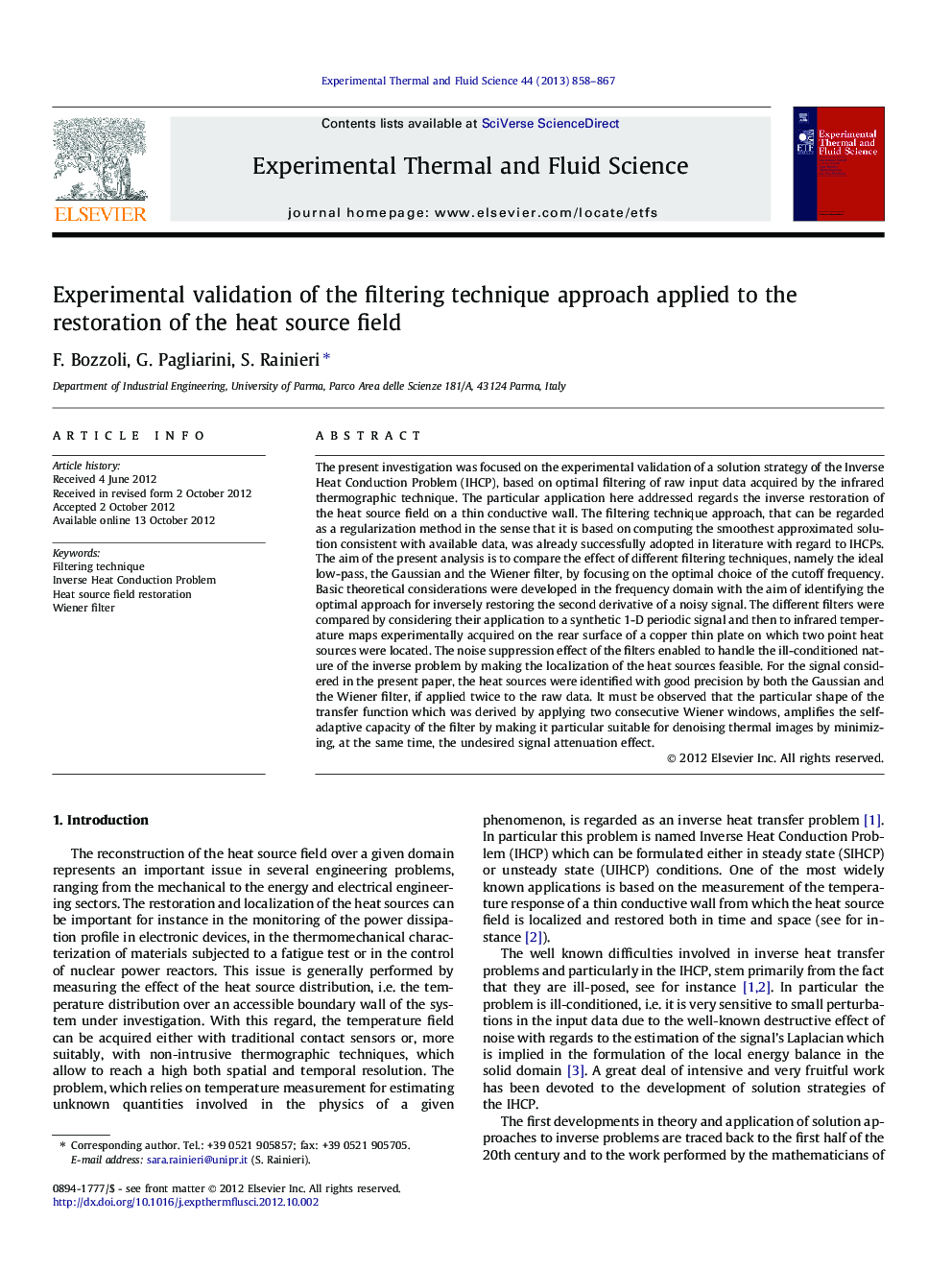| Article ID | Journal | Published Year | Pages | File Type |
|---|---|---|---|---|
| 651576 | Experimental Thermal and Fluid Science | 2013 | 10 Pages |
The present investigation was focused on the experimental validation of a solution strategy of the Inverse Heat Conduction Problem (IHCP), based on optimal filtering of raw input data acquired by the infrared thermographic technique. The particular application here addressed regards the inverse restoration of the heat source field on a thin conductive wall. The filtering technique approach, that can be regarded as a regularization method in the sense that it is based on computing the smoothest approximated solution consistent with available data, was already successfully adopted in literature with regard to IHCPs. The aim of the present analysis is to compare the effect of different filtering techniques, namely the ideal low-pass, the Gaussian and the Wiener filter, by focusing on the optimal choice of the cutoff frequency. Basic theoretical considerations were developed in the frequency domain with the aim of identifying the optimal approach for inversely restoring the second derivative of a noisy signal. The different filters were compared by considering their application to a synthetic 1-D periodic signal and then to infrared temperature maps experimentally acquired on the rear surface of a copper thin plate on which two point heat sources were located. The noise suppression effect of the filters enabled to handle the ill-conditioned nature of the inverse problem by making the localization of the heat sources feasible. For the signal considered in the present paper, the heat sources were identified with good precision by both the Gaussian and the Wiener filter, if applied twice to the raw data. It must be observed that the particular shape of the transfer function which was derived by applying two consecutive Wiener windows, amplifies the self-adaptive capacity of the filter by making it particular suitable for denoising thermal images by minimizing, at the same time, the undesired signal attenuation effect.
► Experimental validation of the filtering approach to the heat source field restoration. ► Comparison of different filters: the ideal low-pass, the Gaussian and the Wiener filter. ► Application of the technique to both a 1-D synthetic signal and to infrared temperature maps. ► The discrepancy principle was implemented to identify the filters optimal cutoff frequency. ► Both the Gaussian and the Wiener filter (applied twice) enables to restore the heat source field.
